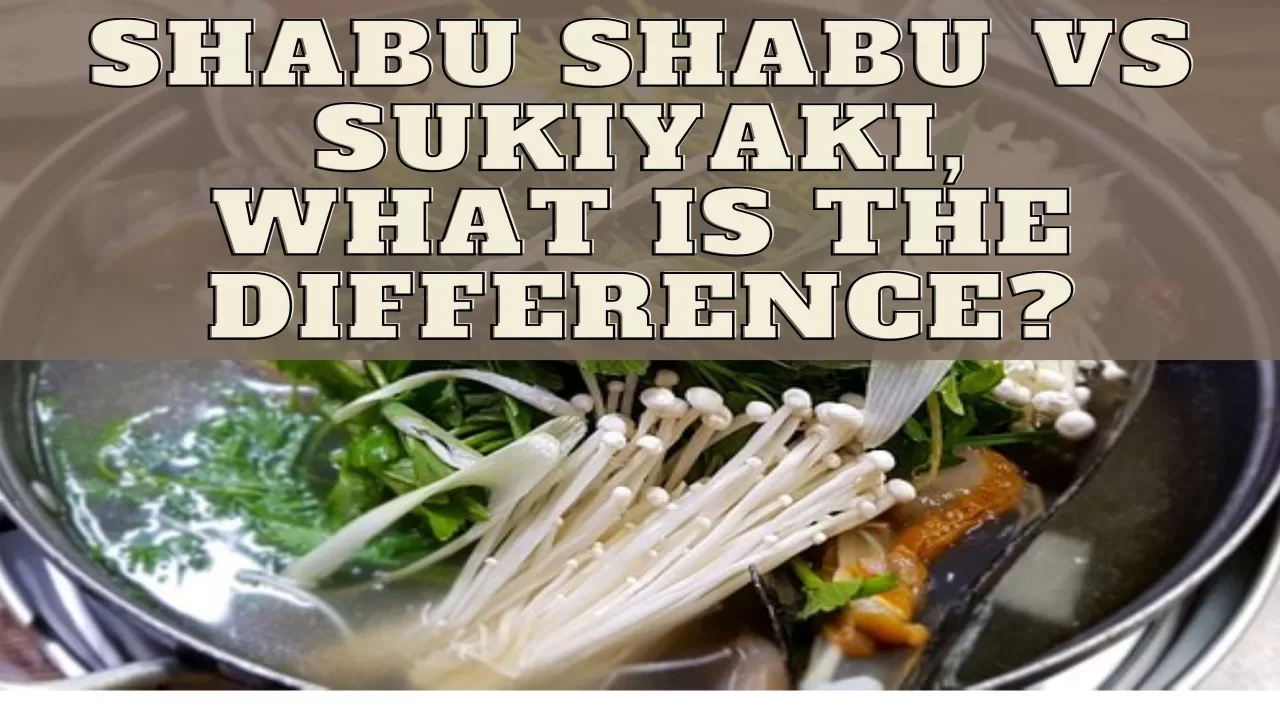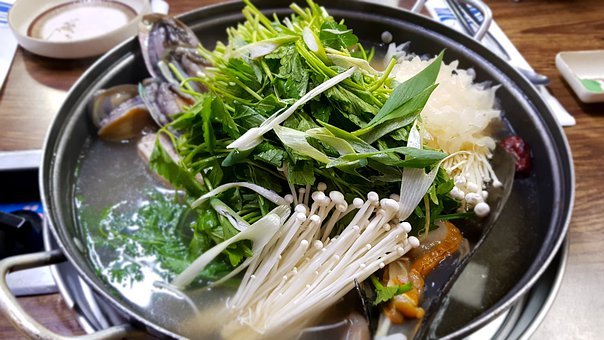
Shabu – shabu and sukiyaki are two types of Japanese dishes that are popular among Japanese and non-Japanese diners alike. These hot pot dishes are really worth trying if you haven’t tried them yet. But before you do, it’s a good idea to know the differences between shabu shabu vs sukiyaki.
While both Japanese dishes have many similarities, they differ in many ways, you can easily distinguish the flavor of one over the other.
Let’s find out which dish suits your taste bud.
Shabu Shabu Vs Sukiyaki
What is Sukiyaki and Shabu Shabu?
Imagine having a large pot of boiling broth or soup on your table where you could personally enjoy cooking thin slices of beef and vegetables, your own way. That is what these two hot pot dishes are all about.
Shabu shabu and sukiyaki are both Japanese nabemono-style hotpot dishes consisting of thinly sliced meat which is typically beef but sometimes pork too, and assorted vegetables.
Both are served with dipping sauces and side dishes.
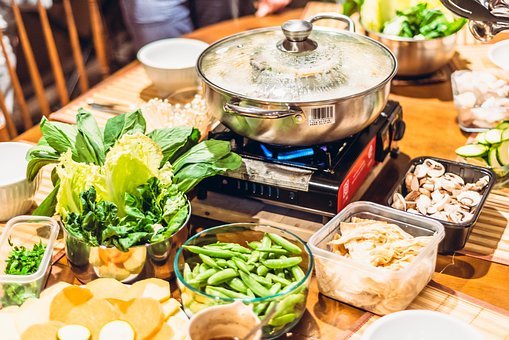
The word shabu shabu means “swish swish,” and it describes the swishing of the meat in the boiling savory broth.

Sukiyaki on the other hand, is another popular hot pot dish in Japanese cuisine. It also uses thin slices of meat (beef or pork) and vegetables. However, its broth is on the sweet side instead of savory.
Differences of Sukiyaki and Shabu Shabu
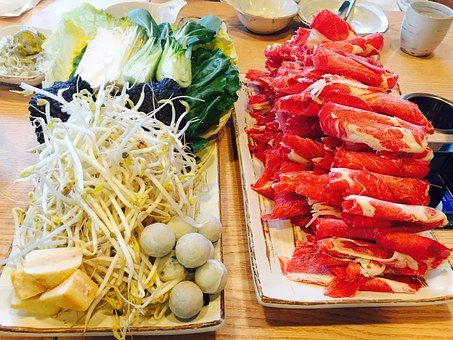
Ingredients
Shabu shabu
This Japanese hot pot dish typically contains thinly sliced meat, most often beef. It also comes with other ingredients including tofu, Chinese cabbage, nori, onions and shiitake and enokitake mushrooms.
As this is a popular dish in Japanese cuisine, many other versions came up. Some versions use other types of meat and seafood. Aside from beef, lamb, chicken, pork and crab are also used.
Sukiyaki
Sukiyaki also uses thinly sliced meat, more specifically beef, although, in the past, pork was also popular.
Aside from the beef or pork meat, tofu, negi which is a type of scallion, leafy greens such as chrysanthemum leaves and Chinese cabbage as well as mushrooms and glass noodles such as shirataki noodles and konnyaku noodles are also normally added.
Preparation
Shabu shabu
The broth is an important component of Shabu shabu. Traditionally, it is made of water, dried kombu seaweed and Japanese cooking sake. However, in many shabu shabu restaurants, they no longer use sake.
The dish is made by submerging and stirring thin slices of beef or meat and vegetables in the boiling broth. As the meat is paper-thin and cooks quickly, they are usually dipped for just a few seconds to avoid overcooking.
After cooking the meat or vegetable in the boiling water, they are then dipped in a sauce, usually ponzu or sesame sauce, before eating. Normally, a bowl of steamed white rice is served alongside a hot pot of shabu shabu.
Once the meat and vegetables are all consumed, the broth or soup stock in the hot pot can be combined with rice, udon or ramen.
Sukiyaki
Different regions develop their own version of this hot pot cuisine, but they can be classified into two main styles. The Kanto style from eastern Japan and Kansai style from western Japan.
Kanto style uses a warishita which is a mixture of soy sauce, sake, dashi, mirin and sugar. The warishita is poured inside the hot pot then the rest of the ingredients including beef or other types of meat, green onions and vegetables are added and simmered together.
On the other hand, the Kansai sukiyaki is prepared a bit differently. In this style, the raw meat is cooked in the hot pot first. When it is almost cooked, sake, soy sauce and sugar are added. Vegetables are added last.
Even the ingredients used are different. As beef was so expensive in the past especially in the eastern and northern regions, sliced pork was the commonly used ingredient by the Japanese people.
Other ingredients such as chicken, fish, udon noodles, shiitake mushrooms and slightly grilled tofu are also added. In both types, raw eggs are used for dipping.
It’s important to note that raw egg is considered unsafe to some people such as pregnant women. So if you want to avoid raw egg, your best option is shabu shabu.
In both sukiyaki and shabu shabu, cooking is done on the dining table. The hot pot is shared among those seated, but each one has his or her own plate for eating.
Being able to cook sukiyaki or shabu shabu right on the dining table offers a unique dining experience.
Dipping sauces
If you visit Japanese restaurants that serve shabu shabu or sukiyaki, one thing you’ll easily notice is the wide variety of sauces you can choose from for dipping the meat and vegetables.
Shabu shabu
Shabu shabu is oftentimes served with steamed rice and two sauces for dipping: ponzu sauce which is a citrus-flavored soy sauce and a creamy sesame sauce called “goma-dare”.
You can also use condiments such as chili oil, sesame oil, sesame paste, toasted sesame seeds, spring onions, crushed garlic, and grated daikon radish can be used to customize the flavor of your sauce.
To finish off the meal, you may also add udon or shirataki noodles to the hot pot.
Sukiyaki
Rice also goes well with this dish. For the sauce, you can easily find ready-to-use sukiyaki sauce. What makes the sukiyaki sauce unique is its use of raw egg. The raw egg gives it its unique flavor.
Flavor
Although both dishes use thinly sliced beef, they use different sets of ingredients.
The method of preparation differs too. Because of that, there’s a big difference between the two when it comes to flavor.
Between sukiyaki and Shabu shabu, sukiyaki offers a sweet and rich flavor because of the soy sauce and sugar in the mixture. Shabu shabu, on the other hand, has a light to mild flavor.
Moreover, the dipping sauce can greatly influence the flavor of beef and vegetables. That’s the reason why restaurants offer different varieties of dipping sauces. You can also add condiments to the dipping sauce to further enhance the taste.
How to eat Shabu Shabu and Sukiyaki
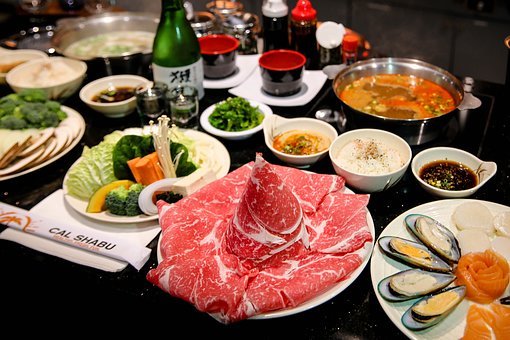
Hot pot dishes are typically prepared and eaten from a large pot on the dining table.
Large chopsticks are used for putting and getting the beef and the rest of the ingredients into the pot and out of the pot to the person’s plate. On the other hand, smaller chopsticks are used for eating.
While condiments are available, they are for personal use only and are not added to the pot.
Just like with any hot pot cuisines, they are best shared with friends and family.
Summary
If you want to eat sukiyaki or shabu shabu, there are many Japanese restaurants even in the US that offer these two dishes. Now that you know how they differ, you can easily decide which restaurant to go to.
Moreover, you may also consider preparing your own feast at home with your friends and family. Shabu shabu and sukiyaki are not that difficult to prepare. They use ingredients that are widely available in many local markets.

